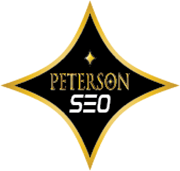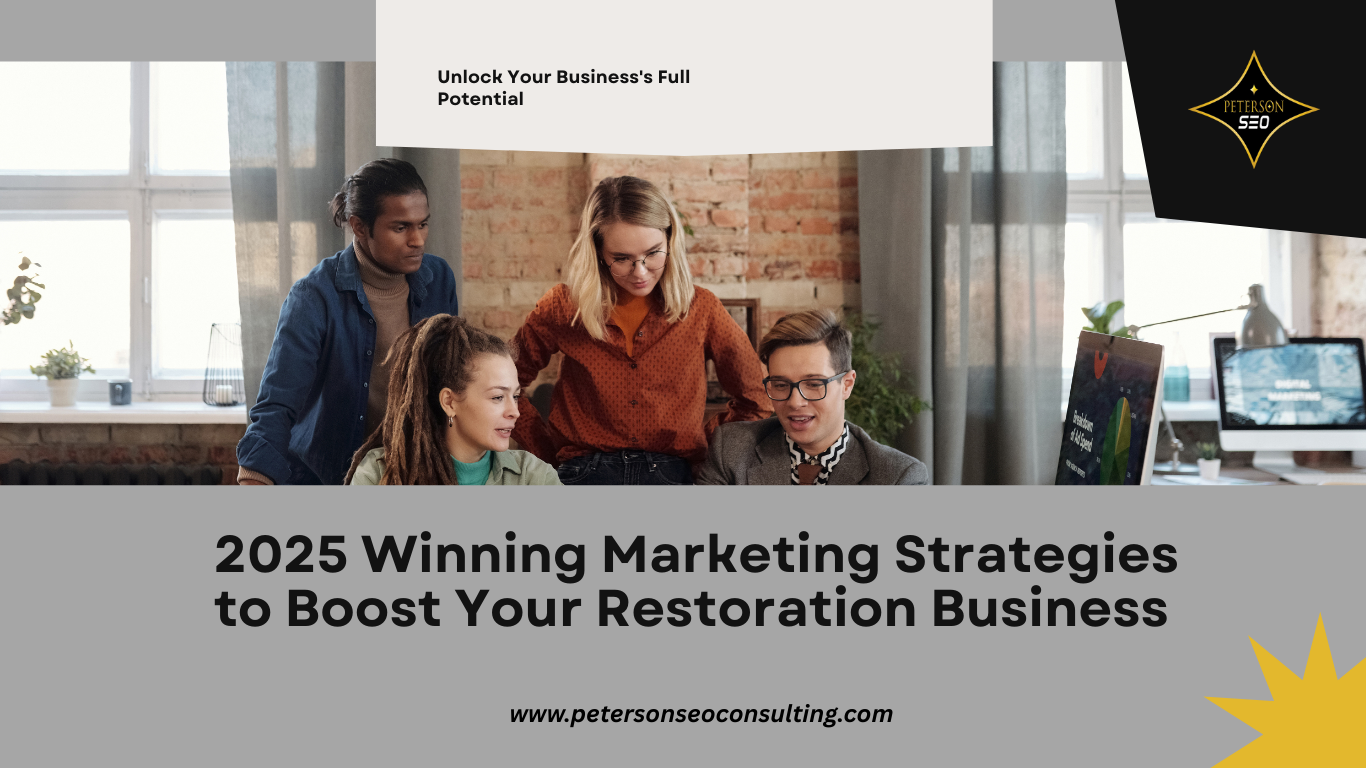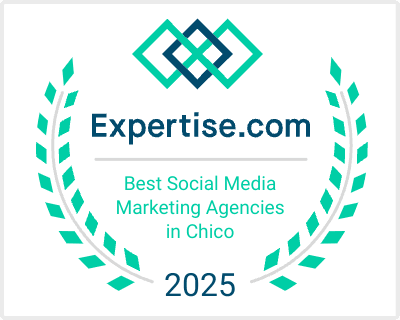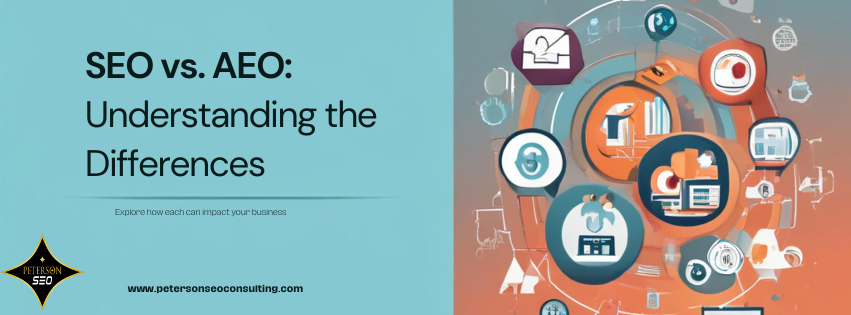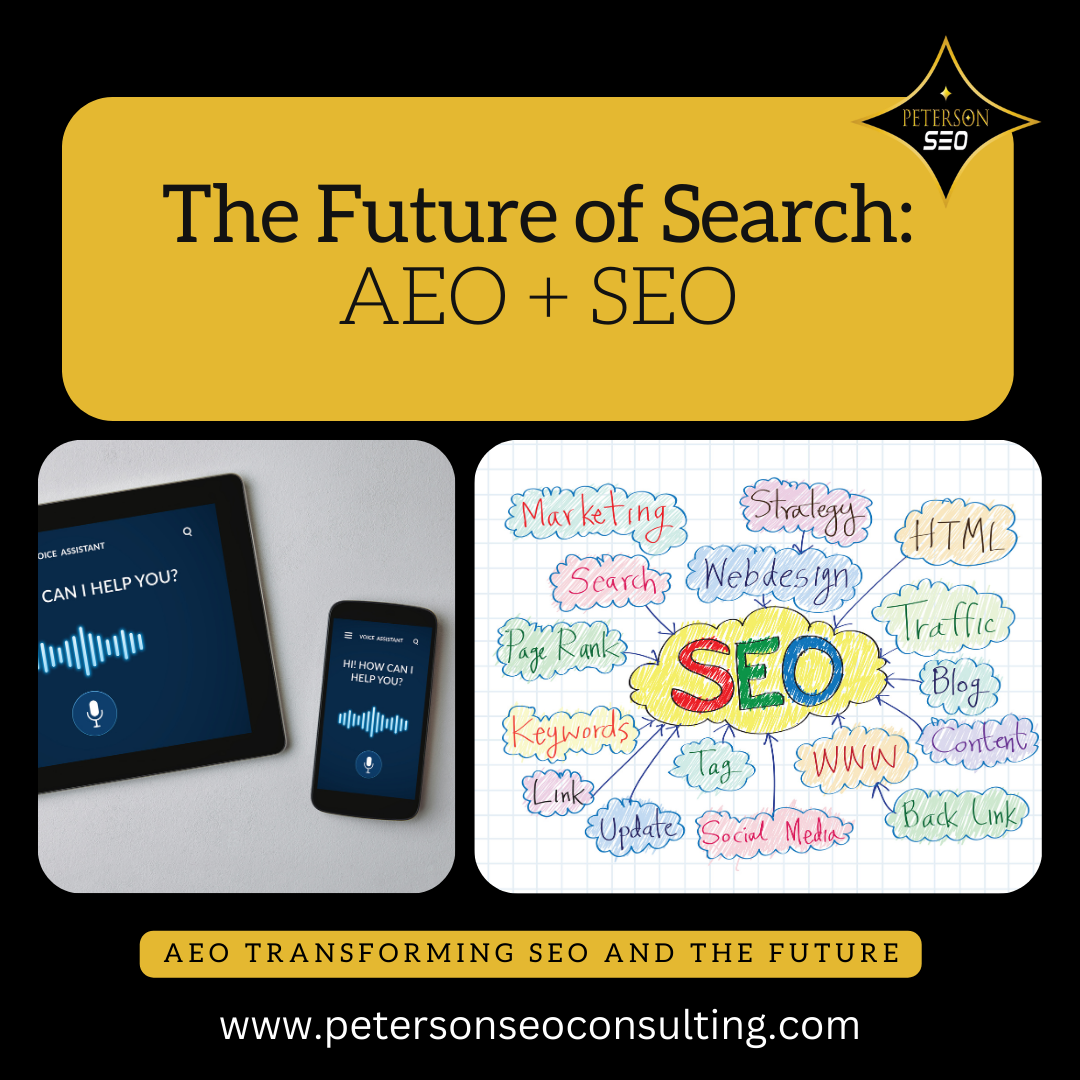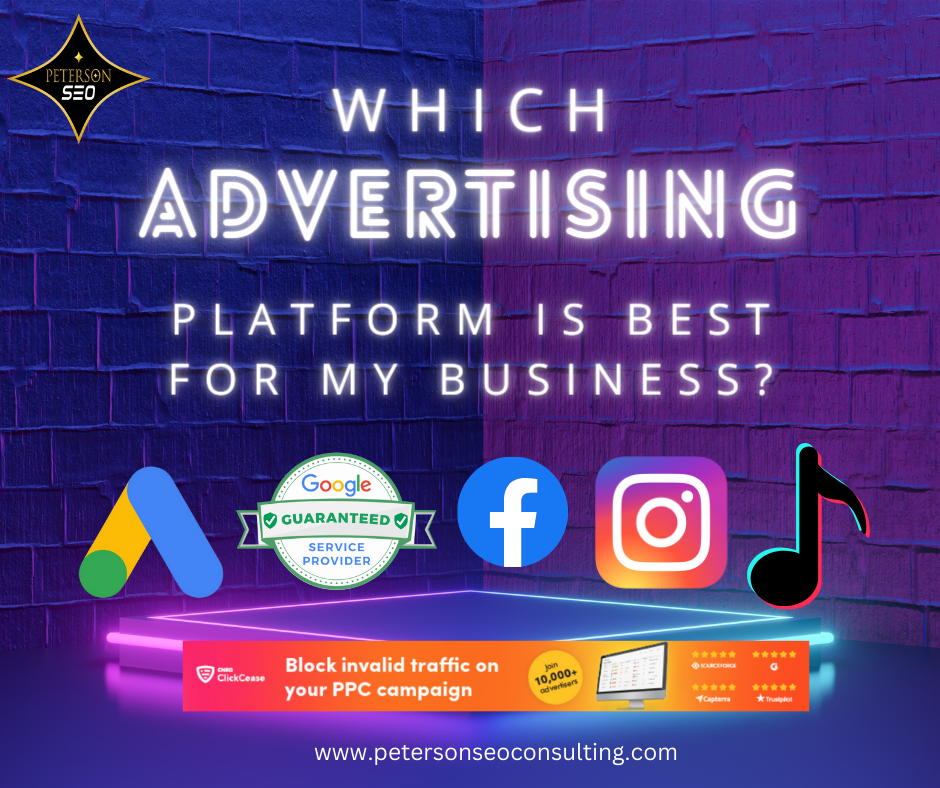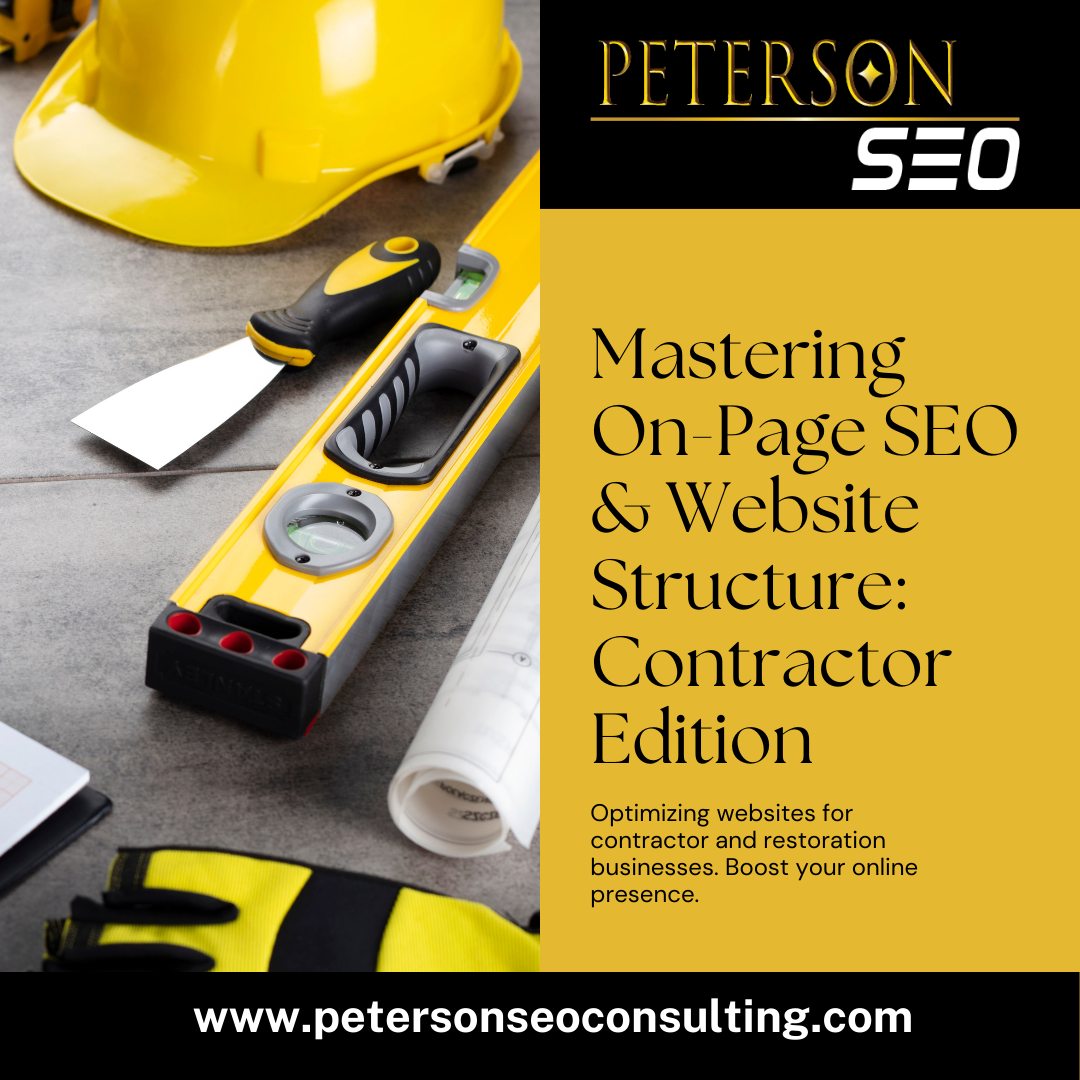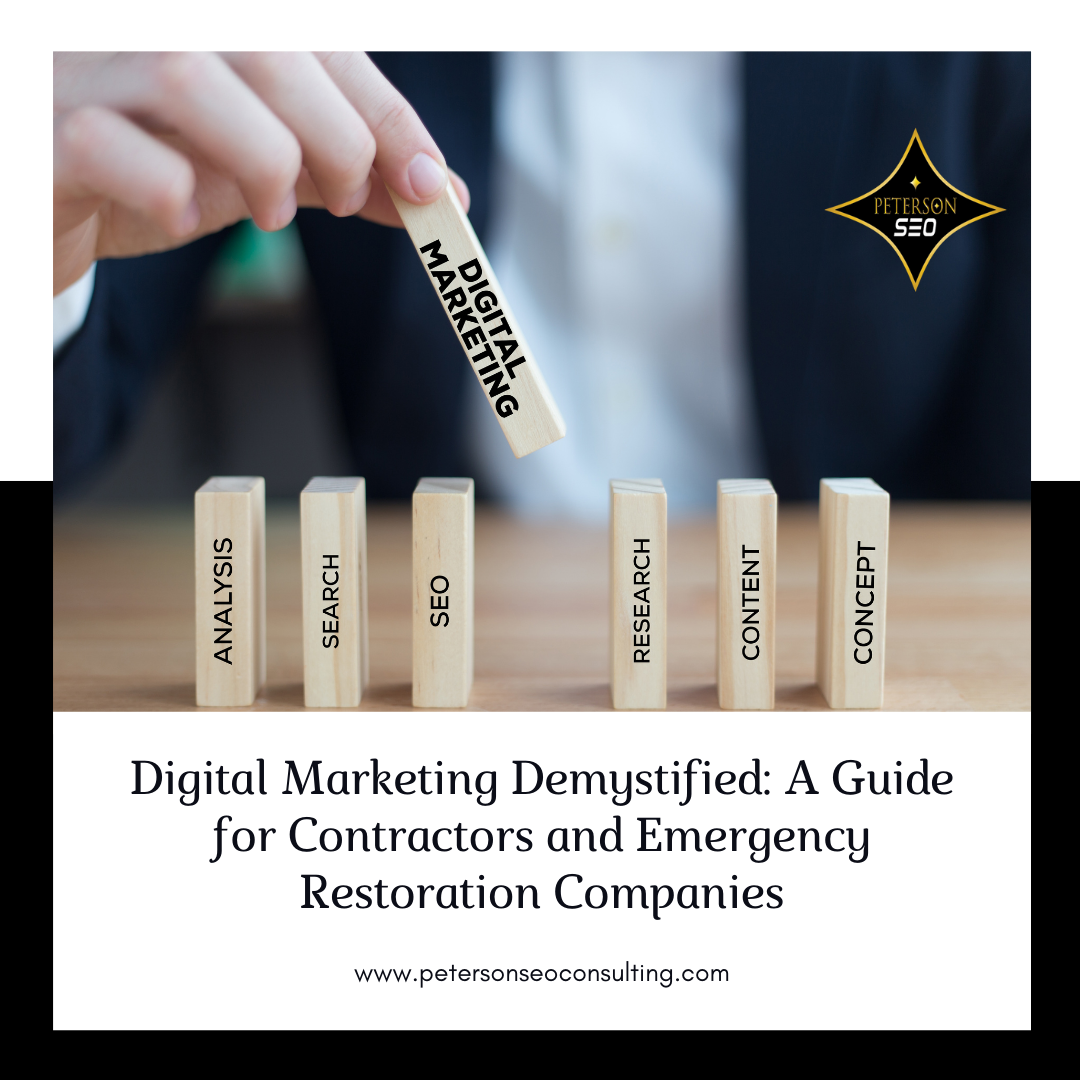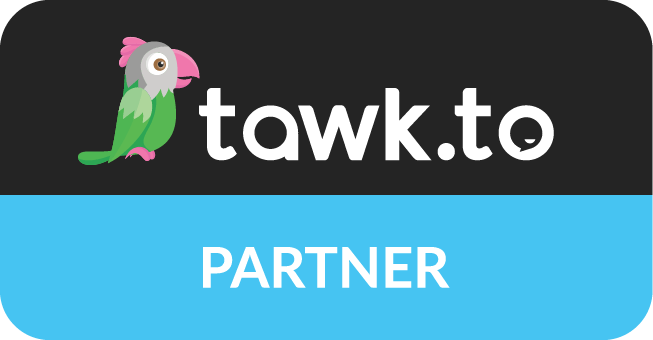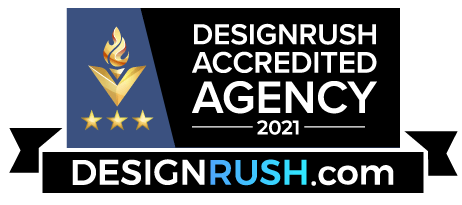2025 Winning Marketing Strategies to Boost Your Restoration Business to New Heights
April 10, 2025 | SEO Golden Girl | Chico, CA | Albuquerque, NM | USA
Stop Relying on Referrals and TPAs – You’re Leaving Money on the Table
If your restoration business is still banking on referrals or Third-Party Administrators (TPAs) to stay afloat, it’s time for a reality check. These methods might make it feel like you're having a "good year," but in truth, you could be making much more.
Let’s talk about TPAs. Sure, they hand you jobs, but there’s always a catch. Most programs require long contracts, hefty fees, force you to slash invoices to meet their pricing models, and often demand exclusivity with certain insurance providers. That means if you get a lead outside the TPA network, you're obligated to pass it along—even if it could've been a high-value job. That’s not marketing; that’s being boxed in.
Referrals? Absolutely keep them coming. Referrals build trust and are a sign of great service. But they’re not scalable. You can't plan for a flood of referrals when storms hit. And they don’t support sustainable growth. Even if your referrals and TPAs generate a few million in revenue a year, you're still leaving even more money on the table. With a solid Peterson SEO restoration marketing strategy in place, you could easily multiply those earnings and grow beyond your current ceiling.
Digital marketing puts the power back in your hands. It’s about building a predictable, scalable system for growth that works even while you sleep. Your competitors are already catching on—now it’s your move.
Why Traditional Marketing Alone Isn’t Enough Anymore
Back in the day, TV ads, radio spots, and billboards were considered the gold standard for local marketing. They were the go-to tools for businesses looking to increase visibility and capture the attention of potential customers. But let’s be honest—when was the last time someone remembered the billboard you passed on your commute when their basement was filling up with water?
The problem with traditional marketing—while it can still play a role in overall branding strategy—is that it is becoming increasingly ineffective for emergency services like restoration companies. The reality is that these strategies are expensive, difficult to track, and nearly impossible to optimize. Sure, a catchy radio jingle or flashy TV ad might grab someone's attention, but if you're not in front of them when disaster strikes, they likely won’t remember you when it counts.
Traditional Marketing’s Limitations in the Restoration Industry
- Expensive and Broad Reach: TV, radio, and billboards cost a lot of money, especially for restoration companies that may not have a national or regional need for these kinds of campaigns. The cost per impression is high, and most of the time, the audience is too broad. You’re not targeting the specific people who need your service at the moment they need it. For example, someone in a water damage emergency might not even be near a billboard or listening to the radio station when the problem strikes.
- Difficult to Track: How do you know if that flashy ad really brought in any business? It’s nearly impossible to determine if that $5,000+ TV spot led to a lead, or if the billboard led to a customer picking up the phone. This lack of measurability makes it hard to figure out what's actually working and whether you're getting a good return on investment (ROI).
- Hard to Optimize: Traditional marketing doesn’t offer much flexibility for fine-tuning based on performance. Once a TV or radio ad is out there, it's out there. You can't change the script halfway through, and you can’t adjust it based on immediate feedback. Plus, if you’re not constantly keeping your brand at the forefront through repeated, expensive placements, it becomes
background noise.
The Power of Digital Marketing
On the other hand, digital marketing offers unmatched precision, real-time tracking, and scalable solutions for restoration companies. Here's why it works so much better than traditional methods, especially in the emergency services industry:
- Precision: With digital marketing, you can target customers who are actively searching for services like yours. When someone is in a water damage emergency, they're not flipping through the yellow pages or reminiscing about the catchy radio jingle from months ago—they’re reaching for their phone and typing "water damage restoration near me." This is the moment that matters.
- Trackability: Unlike traditional marketing, digital campaigns can be tracked and measured in real-time. Whether you’re running a
Google Ads campaign, working on
SEO, or sending out an email blast, you can see exactly how well your efforts are performing, how many leads you’re generating, and how much money you’re making from those efforts.
- Scalability: Digital marketing is highly scalable. If you’re just starting and trying to capture leads in your local area, you can create a campaign that targets a very specific radius around your location. As you grow, you can expand your digital marketing efforts to new cities, regions, or even nationwide. This level of flexibility and expansion is something traditional marketing can't keep up with.
Comparison Table: Traditional vs. Digital Marketing for Restoration Services
| Marketing Strategy | Traditional Marketing (TV, Radio, Billboards) | Digital Marketing (SEO, Google Ads, Social Media) |
|---|---|---|
| Cost Efficiency | Expensive; high cost per impression | Affordable; pay-per-click, pay-per-impression, or organic options |
| Targeting Precision | Broad and untargeted; may reach the wrong audience | Highly targeted; reach customers actively searching for restoration services |
| Trackability | Difficult to measure; hard to track ROI | Real-time tracking; precise analytics to measure performance |
| Optimization | Hard to adjust once the campaign is running | Easy to adjust and optimize based on performance data |
| Flexibility | Fixed once set; hard to change campaign elements | Flexible; campaigns can be modified and scaled quickly |
| Immediate Visibility | May be forgotten when emergencies strike | Instant visibility when customers search for emergency services |
| Customer Engagement | One-way communication; no direct interaction | Interactive; engage with customers directly (through ads, social media, etc.) |
Peterson SEO 2025
Emergency Services Demand Speed & Visibility
When disaster strikes, homeowners and property managers aren’t spending hours researching options. They're urgently seeking immediate help. In these high-stress moments, the first few businesses that appear in search results are usually the ones that get the call.
Today, more than 60% of those searches happen on mobile devices, and 46% of all searches on Google involve local intent, according to Safari Digital. Additionally, 28% of these local searches lead to a purchase, meaning that a significant number of people not only find local businesses but also take action by engaging with them in person or through a call.
In the restoration industry, visibility and speed are paramount. You must be ready to appear in front of customers at the exact moment they need help. And more than ever, voice search is playing a major role during emergencies. Imagine someone shouting, "Hey Google, find water damage restoration near me" while trying to manage a crisis. If your site isn’t optimized for local, mobile, and voice searches, you risk being invisible when your customers need you most.
To capture the moment, restoration marketing needs to prioritize fast, visible, and easily accessible information. Customers need to see your business appear in search results, quickly assess your credibility through reviews or trust signals, and find your phone number without hesitation. If you’re not front and center, your competitor will be. When it comes to emergency services, hesitation can lead to lost business.
In a world where 87% of customers use Google to find local businesses, ensuring that your company is discoverable at the critical moment is no longer optional. It’s a must. By mastering local search engine optimization (SEO), you can guarantee that your business is there when it matters most, driving leads, sales, and growth for your restoration services.
Your Website Is a Conversion Machine – If It’s Built Right
In 2025, your website isn’t just a placeholder online. It's more than a simple digital business card or contact point for your restoration services. It acts as your sales rep, your dispatcher, and your estimator—working 24/7 to generate leads, close deals, and answer questions from potential customers.
However, too many restoration websites fall short. They’re slow, poorly designed, and filled with generic content that doesn’t speak to the customer’s needs or align with search engine algorithms. This kind of website won’t convert visitors into calls or jobs. It’s time to step up your game.
Here’s how to make your website a conversion machine in 2025:
| Strategy | What It Means | Why It’s Important |
|---|---|---|
| Separate Service Pages | Create individual, SEO-optimized pages for each service (e.g., "Mold Removal", "Sewage Cleanup", "Sacramento Water Damage Repair"). | Helps search engines understand exactly what you offer, and it boosts your rankings for specific services. |
| Local Keyword Strategy | Include local keywords like "emergency water damage repair in Salt Lake City" instead of just broad terms. | Ensures your business appears in local searches, improving visibility when people need you most. |
| Unique Content | Avoid copying content from other sources like manufacturers or franchises. Write original, unique text that speaks to your audience. | Google penalizes duplicate content. Original content helps build trust, authority, and better SEO rankings. |
| Location Landing Pages | Create separate, optimized pages for each service area you cover (e.g., "Water Damage Restoration in Sacramento", "Salt Lake City Mold Remediation"). | Google rewards hyperlocal relevance. A page for every service area increases your chances of ranking in more locations. |
| FAQs | Add a well-crafted FAQ section that answers real questions your customers are asking (e.g., "How long does water damage cleanup take?"). | Provides value to customers and helps improve your site's authority and SEO rankings and more opportunities to appear in voice search queries. |
Peterson SEO 2025
1. Separate Service Pages
Your service offerings should never be lumped together on one page. For example, don’t combine water damage repair, mold remediation, and sewage cleanup on the same page. Each service should have its own dedicated, SEO-optimized page. This allows Google to categorize your services more effectively and improves the chances of ranking for specific keywords.
For instance:
- “Water Damage Restoration [City]”
- “Mold Removal Experts in [City]”
- “[City] Sewage Cleanup Services”
Each page should focus on a specific service in its title, URL, and body content, ensuring that search engines can identify exactly what your business offers.
2. Local Keyword Strategy
Local Keyword Strategy: It's Not Just About the Keywords
In 2025, a successful local SEO strategy goes beyond simply adding keywords to your content. It’s about strategically targeting location-specific keywords that reflect your audience’s search intent and ensuring that your website is optimized for local search behavior. This requires not only accurate keyword placement but also consistent, high-quality content that speaks to both users and search engines.
Here's how to effectively approach local keyword strategy in the restoration industry:
A. Target Location-Specific Keywords
Instead of focusing on generic terms like "water damage restoration," incorporate local intent keywords that specify your geographic area. For example:
- "Water damage restoration Salt Lake City"
- "Sacramento Flood cleanup"
- "Mold removal services in Denver"
These keywords help you target customers who are looking for services in specific locations, ensuring that search engines understand which areas your business serves.
B. Proper Keyword Placement and Optimization
To rank effectively, your local keywords should be used in key on-page SEO elements. Here’s where you should place them:
- Title Tags:
Use your target keyword and location for the page title. Example: "Water Damage Restoration Salt Lake City – 24/7 Emergency Service"
- Meta Descriptions:
Ensure your meta descriptions include local keywords to entice users to click. Example: "Need water damage restoration in Salt Lake City? We provide 24/7 emergency flood cleanup and water extraction services. Call us today."
- Headings:
Your main heading (H1) should include your target keyword and location, with secondary keywords used in subheadings (H2, H3).
- Body Content:
Naturally integrate location-specific keywords in your service descriptions, location-based FAQs, and other page content.
Proper Keyword Repetition: Keyword repetition is essential to help search engines index your page for the right search terms, but it needs to be used naturally. Avoid “keyword stuffing,” where the same keyword is repeated excessively. Instead, use synonyms, variations, and related phrases to maintain readability and ensure your content remains user-friendly while still being optimized for search engines. A good rule of thumb is to aim for a keyword density of 1-2%, meaning the target keyword appears once or twice for every 100+ words of content. This ensures the page is optimized for SEO without appearing spammy.
C. Focus on Long-Tail Keywords
Long-tail keywords are specific, multi-word phrases that reflect what users are searching for. For example:
- "Best water damage restoration company in Salt Lake City"
- "Affordable flood cleanup services in Miami"
These phrases capture highly relevant, specific searches that have a higher likelihood of converting. Long-tail keywords also help reduce competition and ensure you’re appearing for more focused queries. However, remember to keep the use of keywords natural.
3. Unique Content
In 2025, duplicate content is a penalty risk. Many restoration companies use pre-written content provided by manufacturers, franchises, or other sources. While this may seem like an easy option, it leads to duplicate content issues. Google’s algorithms penalize websites that use the same content as other sites, which hurts your ability to rank.
Instead, you should create original content that speaks directly to your target audience. For instance, instead of copying generic service descriptions, write a detailed, unique explanation of each service you provide. Include real-world examples and tailored advice. Original content helps build credibility, authority, and trust, which are critical for both SEO rankings and customer conversions.
4. Location Landing Pages
Having a single location based landing page for your services is no longer enough. In fact, Google rewards hyperlocal relevance. Each city or area you serve needs to have its own optimized page with original content that speaks directly to that location’s needs.
For example, if your business serves Sacramento, San Francisco, and Los Angeles, you should have:
- A page specifically for
Sacramento water damage restoration
- A page for San Francisco sewage cleanup
- A page for Los Angeles mold removal
Each page should include local keywords, a unique description of services, and testimonials from customers in that area. This not only boosts your local SEO but also creates a more personalized experience for visitors.
5. FAQs
Including a dedicated FAQ section on each service page is a powerful tool for both improving your rankings and increasing conversions. Customers are looking for quick answers, especially when they’re in an emergency situation.
By adding well-crafted questions that your potential customers are asking, like “How long does water damage cleanup take?” or “What should I do first if my home floods?”, you increase your website’s authority and ensure it’s serving real, useful content. Furthermore, it helps to improve rankings, as Google loves content that answers questions directly.
Your website has the potential to be your hardest-working employee. But it needs to be designed and optimized for conversions. By following these key strategies—creating separate service pages, using a strong local keyword strategy, writing original content, building service area landing pages, and addressing FAQs—you ensure that your website isn’t just a place for information but a tool to generate leads, build trust, and convert visitors into paying customers.
Local Search Domination: Get Found in Your Own Backyard
In 2025, local search domination isn’t just about being listed on Google; it’s about optimizing every aspect of your Google Business Profile (GBP) and ensuring your business appears at the top when local customers need you most. If your GBP isn’t optimized, you’re already falling behind your competitors.
Here’s what works in 2025 to own your local market:
1. Upload Fresh Jobsite Photos Weekly
Visual content is powerful. Regularly uploading high-quality jobsite photos to your GBP does more than just show off your work—it increases engagement and signals to Google that your business is active and trustworthy. These photos not only help potential customers trust your business but also improve your local SEO rankings. Google prioritizes businesses with active, regularly updated profiles.
Pro Tip: Take photos of the team in action, before-and-after shots, and pictures of any unique equipment used during restoration jobs. This also helps potential customers connect with the people behind the service.
2. Respond to Every Review – Even the Good Ones
Customer reviews are a key ranking factor for local SEO in 2025. Responding to every review (good or bad) shows customer engagement and credibility, which Google rewards. It also helps build trust with potential customers who may read your reviews before calling you. By responding to reviews, you can:
- Show that you care about your clients.
- Address negative feedback in a professional manner.
- Boost your business's reputation as a responsive and customer-focused company.
Tip: Personalize your responses. A generic "Thank you for your review" won’t make the same impact as a tailored response that shows you value each client individually.
3. Use the Q&A Section to Preemptively Answer Common Customer Concerns
The Q&A section on your GBP can be a goldmine for answering potential customers' questions. Proactively fill this section with answers to the most common questions about your services. This not only provides value to searchers but also helps your business rank for long-tail search queries (e.g., "how fast does water damage restoration take?").
Tip: Monitor the Q&A section regularly to ensure you’re addressing new questions, and update it with seasonal info or service updates that might be helpful.
4. Post Weekly Updates with Tips, Team Intros, and Seasonal Reminders
Google’s posts feature allows businesses to share updates, promotions, or news directly on their profile. Posting regularly—at least once a week—keeps your GBP fresh and shows that your business is active. Share valuable content like:
- Restoration tips (e.g., "What to do if you experience water damage")
- Team introductions and staff highlights
- Seasonal reminders (e.g., "Fall floods are common, prepare your property now!")
These posts help build local authority and engagement while also providing value to your audience. This can translate into better local rankings and more business.
5. Ensure Consistent and Accurate Citations
Citations, are mentions or listings of your business on third-party directories (Yelp, Angi, BBB, etc.), act as backlinks for local search. The more consistent and accurate your business information is across the web, the more reliable your business appears to Google. NAP consistency (Name, Address, Phone number) is critical—if your information is inconsistent across platforms, it can negatively impact your rankings.
Pro Tip: Audit your NAP information regularly across directories and ensure it matches your GBP exactly. Inconsistent data can confuse search engines and harm your visibility.
Why Your GBP Consistency and Optimization Matter
| Strategy | Action Item | Impact on Local SEO |
|---|---|---|
| Fresh Jobsite Photos | Upload new photos weekly to your GBP | Signals Google that your business is active and trustworthy. |
| Review Responses | Respond to every review, positive or negative | Shows customer engagement and enhances your business reputation. |
| Q&A Engagement | Preemptively answer common customer questions | Enhances visibility for long-tail search queries and builds authority. |
| Weekly Posts | Share updates, tips, or seasonal reminders regularly (at least once per week). | Improves engagement and shows your business is active, helping rankings. |
| Accurate Citations | Ensure your business information is consistent across all online directories | Improves local search ranking and trustworthiness with search engines. |
Peterson SEO 2025
Local search domination in 2025 requires more than just claiming your Google Business Profile—it’s about constantly optimizing and staying engaged. Regularly updating your profile with fresh content, responding to reviews, answering questions proactively, posting useful updates, and maintaining consistent business citations all contribute to better visibility, engagement, and rankings in local search.
Don’t wait for customers to find you—make sure you’re visible, credible, and easy to contact when they need you most. A well-optimized GBP is the key to winning your local market and getting more calls from customers who need your services.
Paid Ads: When You Need the Phone to Ring Now
When it comes to generating immediate leads, paid ads are the most effective strategy. Whether you need to fill your schedule in a pinch or quickly get in front of potential customers, paid advertising can drive the results you need—fast.
But not all ads are created equal. In 2025, understanding the right ad format and optimizing your landing pages are critical to maximizing your return on investment (ROI). Here's how to optimize your paid ad campaigns for restoration services:
Google PPC vs. Local Service Ads (LSAs): Which One Should You Choose?
Local Service Ads (LSAs): The Instant Visibility You Need
Local Service Ads are a game-changer for emergency services. These ads appear at the very top of Google search results, giving you prime visibility at the moment customers need you most. In fact, LSAs come with a "Google Guaranteed" badge, signaling that Google has vetted your business, which increases trust with users.
- Best for: Emergency services, such as water damage restoration, and storm damage repair. Customers in urgent situations are most likely to click on these results.
- Why use LSAs: They provide instant visibility in high-demand areas and require minimal management—Google handles much of the targeting for you and you only pay for the actual leads.
Pay-Per-Click (PPC): More Control for Long-Term, High-Volume Keywords
PPC ads, on the other hand, give you more control over your keywords, bidding strategy, and targeting options. You can target high-volume search terms like "commercial mold removal," "basement flood cleanup," or "emergency restoration services." This strategy is perfect for building a steady stream of traffic and growing your online presence over time.
- Best for: Long-term, non-urgent keywords where you're targeting broader customer segments.
- Why use PPC: Offers complete flexibility over keyword strategy and allows for advanced targeting and bidding tactics.
Avoid Social Ads for Emergencies: Use Them for Branding and General Education
While paid social ads (Facebook, Instagram) are great for building brand awareness and educating potential customers, they are not effective for emergency services.
Social media is a stop-the-scroll type of advertising—meaning the goal is to capture attention as users scroll through their feeds. People are not actively searching for your business on Facebook when they experience a flood, mold infestation, or storm damage. In an emergency, customers need quick solutions, and social platforms aren't designed to meet that need.
- Social ads are ideal for: Branding, seasonal promotions, or general education (e.g., "How to Prevent Water Damage" or "Tips for Homeowners During Storm Season").
- Emergency ads: Focus on Google PPC and Local Service Ads for urgent campaigns when customers are actively searching for services like yours.
Landing Pages: The Key to Maximizing Ad ROI
Your ad landing page is the make-or-break factor in whether your ad generates leads or wastes your budget. A well-designed landing page keeps visitors focused on one goal: converting them into leads. Here’s how to optimize landing pages for maximum performance:
1. No Distractions: Keep Navigation Minimal
- Remove navigation menus: The landing page should not have any links that lead elsewhere, including to your homepage or service pages. The goal is to
capture the visitor’s attention immediately and guide them toward a clear call-to-action (CTA).
- Zero distractions: The moment visitors land on your page, they should understand the
value proposition without navigating through your entire site.
2. Super-Fast Load Times
- Load in under 2 seconds: If your landing page is slow, visitors will bounce before you even get the chance to show them your offer. Google’s
Core Web Vitals (which include page load speed) have become an important ranking factor, and slow pages will negatively impact both your ad performance and organic search rankings.
3. One Clear Offer: Focused and Direct
- Single CTA: Whether it’s "Call Now" or "Get a Free Estimate," the page should focus on
one clear action. Customers don’t want to sift through multiple offers—make your CTA obvious and easy to follow.
4. Trust Indicators: Build Confidence
- Show trust badges, certifications, and real customer testimonials: These help build
social proof and increase the likelihood of conversions. Google also rewards businesses that demonstrate authority and trustworthiness on their landing pages.
5. Use Negative Keywords to Filter Junk Traffic
- Negative keywords are essential in filtering out
irrelevant clicks that waste your budget. For example, if you’re offering water damage restoration services, you might want to exclude searches like "water damage restoration
jobs" or "how to start a restoration business."
6. Geo-Targeting: Focus on the Right Audience
- Geo-target your ads to ensure that only local prospects see your ads. If you're offering restoration services in
Miami, make sure to only target users within your
service area to maximize your ROI and avoid wasting clicks from people outside your region.
7. Track with Call-Tracking Tools
Call tracking is essential for determining which ads and landing pages are converting. Tools like CallSling allow you to track calls from specific ads, giving you insights into which campaigns are generating phone calls and leads.
Ad & Landing Page Best Practices Summary
| Best Practice | Action Item | Impact on Ad Performance |
|---|---|---|
| Minimal Navigation | Remove navigation menus to avoid distractions and focus on conversions | Increases focus and reduces bounce rates. |
| Fast Load Time | Ensure landing pages load in under 2 seconds | Improves user experience and conversion rates. |
| Clear, Single CTA | Use one, clear call-to-action such as "Call Now" or "Get a Free Estimate" | Simplifies the decision-making process and increases conversions. |
| Trust Indicators | Add trust badges, certifications, and customer testimonials to build credibility and social proof. | Increases customer confidence and improves conversion rates. |
| Negative Keywords | Exclude irrelevant traffic using negative keywords (e.g., job searches or unrelated services) | Prevents wasted ad spend and ensures only high-quality leads are targeted. |
| Geo-Targeting | Focus ads on your local area to target the right audience and increase ad relevancy | Maximizes ad spend efficiency by targeting relevant, local customers. |
| Call Tracking | Use tools like CallSling to track phone calls and monitor which ads generate leads | Provides insights into campaign performance and ROI. |
Peterson SEO 2025
Networking, Referrals, and Strategic Partnerships: Building a Sustainable Growth Engine
Referrals are powerful and should absolutely be part of your marketing strategy. However, relying solely on a referral network is a missed opportunity that could be costing you millions in potential revenue. Referrals can’t be the only driver of your growth. To truly elevate your restoration business and scale effectively, it's essential to integrate referrals into a broader marketing strategy that includes digital marketing, local SEO, and strategic partnerships. By combining these tactics, you can create a steady stream of leads that not only sustain your business but also drive long-term growth. Here's how you can make that happen:
1. Get Involved in Local BNI Groups
Business Networking International (BNI) groups are an excellent way to connect with local businesses and form strategic partnerships. These groups are designed to foster word-of-mouth marketing, which is invaluable when you’re building relationships with professionals who can refer customers to you.
- Why it works: BNI groups are focused on building trust within the local community, giving you access to a network of businesses that could be ideal referral partners, from plumbers to property managers.
2. Collaborate with Plumbers, Insurance Agents, and Property Managers
Plumbers, insurance agents, and property managers regularly come into contact with homeowners who may need restoration services after water damage, mold infestations, or other emergencies. Partnering with these professionals allows you to get early access to potential leads who may not yet know they need your services.
- Why it works: These partnerships allow for mutual referrals, helping you create a strong pipeline of leads while offering your partners a reliable service to recommend.
3. Strategic Alliances with Contractors in Adjacent Fields
Consider forming alliances with contractors in adjacent fields—such as roofers, electricians, or HVAC specialists. These partnerships can lead to cross-referrals when clients need additional services outside the scope of your business.
- Why it works: Strategic alliances can lead to
long-term, symbiotic relationships that result in a consistent flow of leads. Sharing resources, co-marketing, or collaborating on joint projects can elevate your reach and increase visibility in your community.
4. Get Your BBB Accreditation
If you haven't already, securing your BBB (Better Business Bureau) accreditation is a game-changer. The BBB accreditation is a major trust signal for both consumers and search engines.
- Why it works: BBB accreditation builds
consumer confidence and shows up prominently in search results, making it an essential factor for establishing credibility in your local market. It’s a simple way to demonstrate trustworthiness and reliability.
5. Create a Smart Referral Program with Clear Incentives
Referral programs are one of the most cost-effective ways to generate new business. Create a referral program that rewards your customers and partners for sending new clients your way. For instance, offering a $200 referral fee for a $10,000 job provides an attractive incentive.
- Why it works: When referral incentives are clear and valuable, people are more likely to share your services with their network, which can dramatically increase the volume of high-quality leads. Referrals are a trusted source of business and should be actively cultivated.
Show Your Work: Leverage Photos, Videos, and Visual Proof for Maximum Impact
People believe what they see, and in the world of restoration services, showing your work is a powerful way to build trust and engage potential customers. Here’s how to use visual content to your advantage:
1. Before-and-After Photos
Before-and-after photos are one of the most effective ways to show potential customers the transformative power of your services. A simple image can convey the quality of your work, demonstrating your expertise in dealing with restoration challenges.
- Why it works: These images build credibility and show tangible results, which instantly connect with consumers who may be evaluating multiple service providers.
2. Short Job-Site Videos
Video content is one of the most engaging forms of media on the internet today. Create short job-site videos that show your team in action—whether you’re cleaning up after a fire or restoring a flooded basement. These videos can be informative and educational, helping potential customers see how you work in real-time.
- Why it works: Videos humanize your brand, show your team’s expertise, and give customers a glimpse into the process, all while building trust and transparency.
3. Tips and How-To Clips
Share short video clips offering pro tips, such as how to prevent water damage or the signs of mold growth. These educational videos not only provide value to your audience but also position your company as an expert in the field.
- Why it works: Educational content boosts engagement, drives traffic to your website, and helps you build authority in your industry. Google also rewards fresh, multimedia content, which can improve your rankings.
4. Equipment Walkthroughs
Show your equipment in action by sharing videos or images of the tools you use. This can highlight your professionalism and expertise, making potential customers feel more confident about your abilities to handle the job.
- Why it works: Demonstrating your state-of-the-art tools and processes reassures customers that you’re using the best technology to solve their problems.
5. Post These Visuals Everywhere
Post your before-and-after photos, videos, and other visual content across your Google Business Profile, website, and social media platforms.
- Why it works: Google loves fresh, multimedia content—so posting regularly will improve your rankings and keep you top of mind with potential customers. These visuals also boost your credibility, making you more likely to attract high-conversion leads.
Peterson SEO Restoration Marketing Pro Tips: Let SEO & AEO Work for You 24/7
SEO isn’t dead—it's evolving, and in 2025, AEO (Ask Engine optimization or Answer Engine Optimization) is the future of online visibility. While SEO helps search engines discover your site, AEO ensures your content is not only found but understood and recommended by search engines, especially with the rise of voice search and featured snippets.
AEO-friendly content is designed to provide clear, concise answers to users' questions. It’s all about structure: bullet points, tables, FAQs, and schema markup. When done correctly, your business can become the go-to recommendation from voice assistants like Alexa or Google Assistant.
To dominate the water damage restoration market, focus on structuring your content around specific user intent. Use headings, subheadings, and bullet points to answer the key questions your potential customers are asking. By aligning your content with Google’s EEAT (Experience, Expertise, Authoritativeness, Trustworthiness) principles, you’ll position your business as the trusted authority in your field.
Want more insight into the digital strategies that are reshaping the industry? Check out: "AEO in 2025: The Future of Search & How It’s Transforming SEO Forever".
Conclusion: Scale Your Restoration Business with Smart, Scalable Marketing
If you're still relying only on referrals or third-party aggregators (TPAs) or even paid lead programs, you're not just missing opportunities—you're leaving millions of dollars on the table. Traditional marketing methods have their place, but in 2025, success comes from embracing scalable, data-driven digital marketing strategies.
To truly grow your restoration business, you need more than just a website. You need a fast, SEO-optimized site with AEO-focused content that speaks directly to your customers’ needs. Add in local search domination and strategically targeted paid ads, and you’ll have a powerful marketing engine working for you 24/7, driving leads and building your brand around the clock.
Ready to take your restoration company to the next level? At Peterson SEO, we specialize in helping businesses like yours scale sustainably by attracting more high-quality leads and turning your brand into the trusted local authority. Let’s talk strategy—because growing your business starts with us. Schedule your FREE consultation to get started today!
AUTHOR
Jessica is the CEO of Peterson SEO Digital Marketing Agency and is a serial entrepreneur that has not only owned and managed her own businesses, but also helps other small businesses grow to new levels. Learn more about Jessica & Peterson SEO.
